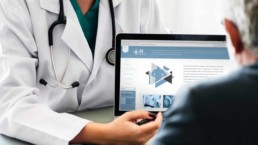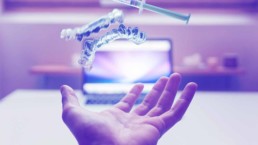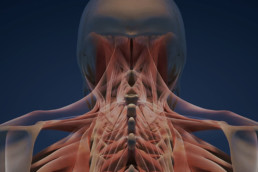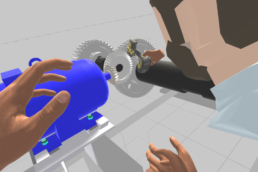Innovation Lab
Medicin VR/AR
Use of VR in health care
Save lives with the versatility of VR/AR/XR. Thanks to state-of-the-art technology, we are able to better represent the human body than ever before. Simulations allow users to train interventions without endangering human lives. Using 3D models, physicians and patients can better understand where the causes of the disease are and how best to treat them.
Use of VR in healthcare
The fact that virtual reality already offers many uses beyond the entertainment industry and construction is nothing new. VR/AR/MR technology is playing an increasingly important role now in the healthcare industry:
- Training, education, practice (e.g.: surgical simulation, training of surgical procedures)
- Medical and health prevention (e.g.: relaxation applications)
- Rehabilitation and psychological therapy (e.g.: exposure therapy, movement training)
- Product marketing (e.g.: pharmaceutical industry, virtual tour of active ingredients)
- Company presentations (e.g.: practice presentation, trade fair appearances)
VR for training in the medical sector
VR, AR and MR applications are also used in training doctors. Budding physicians can be constantly confronted with practical situations without endangering human lives and with the lowest possible material costs. This task is not always easy because either the particular clinical profile is not always present or the risk of learning directly from the patient is too high. So VR is becoming increasingly important for training. A variety of injuries and clinical profiles can be presented so that comprehensive training in medicine is possible without risk and with less costs. But the use of immersive media is not only suitable for training purposes.

Doctors can benefit from VR/AR
Doctors also benefit from a variety of applications from modern technology during treatment. With the creation of virtual 3D models, it is possible to recognise causes of symptoms even faster and visualise them before performing a procedure on a human. This allows the doctor to prepare even more specific treatment and automatically reduce the risk of complications. It also offers the opportunity to virtually explore the patient’s body and to find out the causes of complications. Of course, doctors can make use of simulations and rehearse individual interventions here as well. Thanks to VR, they can do this in realistic situations with the possibility of interactions and adjusted stress levels. The individual findings visualised in the 3D models can be viewed directly and then used for tests. The risk inherent in the actual treatment of patients decreases due to previous practice, all of which can be done without using materials.
Know what is going on
Patients are rarely mentally prepared for longer hospital stays and medical interventions. They don’t know what they are missing or what will happen to them, and often these connections are difficult to convey. Sometimes doctors don’t have the time to clearly explain to the patient what will happen during the procedure. This is due in part because the content of the findings is often very difficult to explain. VR/AR and 3D modelling can be of great use here. The patient can be given a particularly clear and understandable presentation about what is going on in their body and how the treatment will take place. That means the patient will be well informed about the findings and see how the procedure is designed or possible therapies can work.
Use in therapy and rehabilitation
VR continues to be used for various health problems. Another important area of application for VR is the treatment of phobias and anxieties. Patients can be confronted with their fears in simulations. One common phobia is the fear of spiders. Using realistic visualisations, a model of a spider can be virtually projected via the VR glasses during several sessions. The recurring confrontation with the object of fear leads to systematic desensitisation. That makes it possible to treat phobias via VR therapeutically and to create lasting effects.
At Trotzkind, we can draw on years of experience with immersive media such as VR/AR/MR, 360° videos and interactive installations. Our projects such as “Body VR” have already made a significant contribution to the medical sector. We would be happy to assist you in implementing your ideas and projects.




